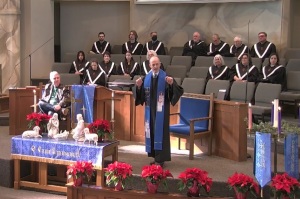8 Consequences of Building a Church Too Big

I call it "the aftermath."
A church goes through an intense time of planning and fundraising to construct a new facility. Then the members participate in a groundbreaking service. Finally, the building is constructed in the midst of great hope and anticipation.
Then the bottom falls out.
The great hope that accompanied the building of the facility becomes a great despair. The church realizes the building is far more than they need, that the expenditures were far greater than they should have been, and that alternative and smaller plans were wrongly rejected.
The church built too big.
And now comes the aftermath. I also call it "unintended consequences." Here are eight of them:
1. Debt becomes shackles. There are different schools of thought about churches taking on debt. Some would insist a church should remain debt-free. Another would be okay with moderate and reasonable debt. But in this case, the indebtedness is neither zero nor reasonable. It is burdensome and even debilitating.
2. Morale is hit hard. The morale swing in the church is dramatic. It is one thing for a church to have low morale. It is another thing for a church to have low morale after experiencing high expectations and a great morale.
3. Leaders spend too much time with a new narrative. They find themselves constantly explaining what happened, regularly defending their decisions, or falling on their swords with each new question and comment.
4. Utility costs are too high and burdensome. Almost every church I have seen in this situation underestimated the costs of utilities in the new facilities. Those extra and often unexpected expenditures further cripple the church financially.
5. They built it, but they didn't come. It is not uncommon for churches that build too big to expect that growth will take care of the bigger facility. Rarely does a facility alone attract the unchurched and the nominally churched.
6. The church becomes dangerously nostalgic. The members remember "the good old days" when they had smaller but more used facilities. They long for the past where debt was not such a burden. Any church that lives in the past is headed for a future that holds imminent decline and death.
7. There are fewer financial resources for ministry. Most of the funds are used to pay personnel costs and the costs of the facilities, including indebtedness.
8. The church has difficulty finding good successor pastors. It is not unusual for the pastor to leave, frustrated and fearful of the financial burdens of the church. It then becomes exceedingly difficult to find a good successor pastor, once the candidates see how few dollars can actually be used for ministry in the church.
Don't build too big. Plan carefully before you do. Be careful you don't get too zealous in the types and sizes of facilities your church will build.
You will pay dearly for your mistakes in the future.
Originally posted at thomrainer.com.




























